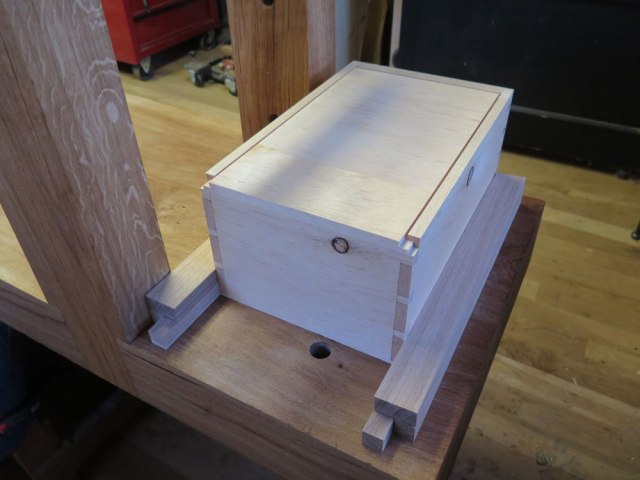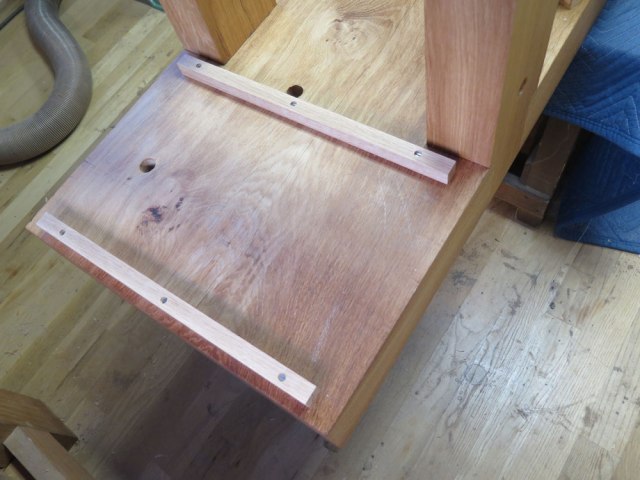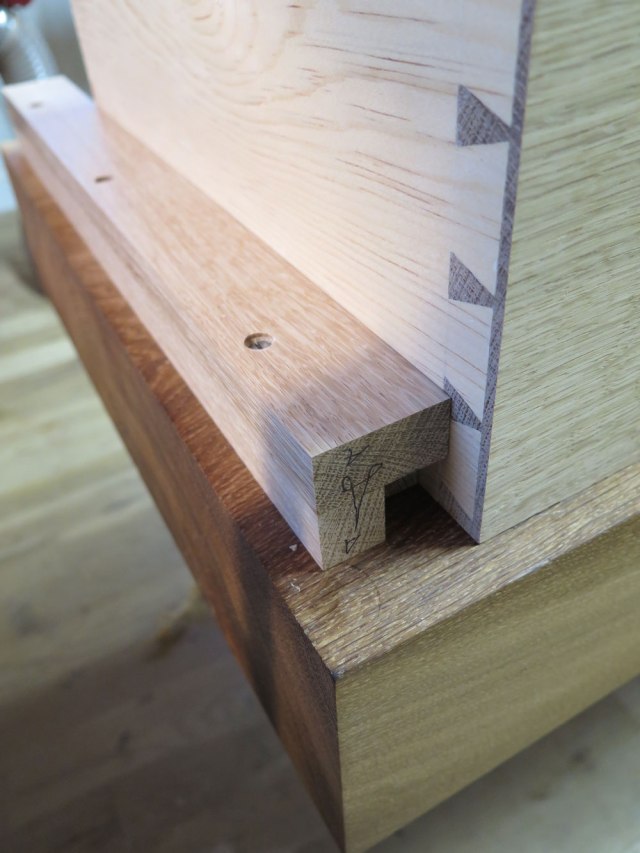Add a Drawer to the Roubo Workbench –

Most drawers attached to the benchtop of a workbench get in the way of clamping, the bench dogs or the holdfasts. And so when I build a workbench for a customer, I typically omit the drawer (with their permission, of course).
But this bench that I’m finishing up needs a drawer, and so I was determined to make it look just like the drawer in A.J. Roubo’s Plate 11 and not get in the way.
Roubo didn’t have much to say about the drawer: “One should place a drawer at the end of the bench so that the workers can close up their minor tools like gouges, compasses, etc.” That brevity gave me a lot of leeway as to how the drawer should be constructed and hung.
As to construction, the drawer is built like a typical 18th-century drawer. The rear corners are joined with through-dovetails. The front corners are joined with half-blinds. The bottom slides in through the back of the drawer via a groove in the sides and drawer front.
The sides, back and bottom are all 1/2”-thick pine. The remainder of the parts are made with 7/8”-thick oak. The drawer itself is 7” high, 10” wide and 15-1/2” deep. I came to this measurement by scaling Roubo’s drawing of the drawer compared to the rest of the bench.

But how to hang the drawer? If I were worried about theft, I would design the mechanism differently. But as this bench is destined for a private shop, I decided to make the runners and slides robust and repairable.

The two drawer runners are each constructed of two pieces of oak screwed to the underside of the benchtop to create an “L” shape. Then I glued two slides to the drawer sides that slide back and forth in the runners. It’s basically a side-hung drawer. You’ll note that the slides are about 17” long, which will allow for some over-travel if the drawer is pulled out too far.

I nailed a couple of drawer stops to the benchtop and oiled everything up to match the bench.
All this is left is to mortise in the strike for the lock.
This might not be the way that Roubo would have done it, but until I get my Ouija board dialed into 1767, this will have to do.
— Christopher Schwarz





